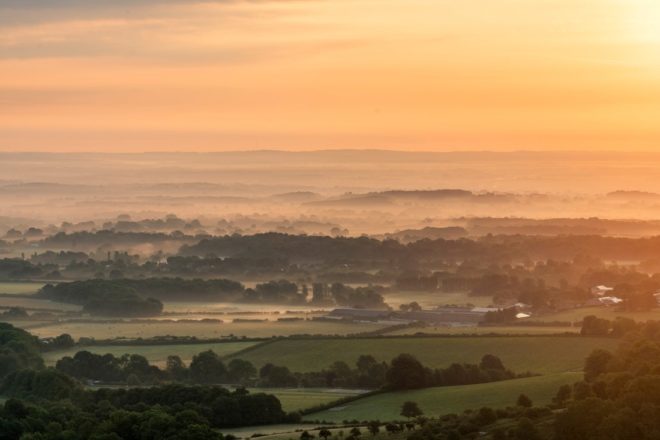History of the South Downs
Not only have the centuries of human habitation shaped the National Park but the landscape has and still does, dictate where people have chosen to live and work the land.
It’s been a place of worship for centuries, nurturing a spiritual and emotional connection in those who spend time here.
Some of the earliest settlements in the South Downs occur atop the magnificent chalk ridge and date back over 5,000 years. Sites like Cissbury Ring, the largest hill fort in Sussex, were chosen for their defensive properties, commanding an exceptional view and being remarkably tough to attack. The fortifications at Cissbury encompass some sixty five acres of land that was used both for farming and mining flint which can still be seen in the walls of wonderful buildings right across the National Park.
To actually see, touch and even smell what Iron-Age life at Cissbury would have been like in its day, head westward to Butser Ancient Farm. Originally an Iron Age site in its own right, Butser became an open-air research laboratory where archaeologists could experiment to test their theories on how people lived in Iron Age times. You can see the inside of a roundhouse, get dirt under your nails in the archaeology pits and take a course on all kinds of Iron Age crafts from bonze sword making to flint knapping.
In Roman times, the South Downs was a high status area and villas were constructed that could exploit both the river valleys and the downland for agriculture. Bignor Roman Villa is still visible today and sports world class mosaics and an extremely well preserved hypocaust underfloor-heated dining room, to keep the room warm during those freezing British winters.

©️ SDNPA/Sam Moore
After the Norman conquest, beacons were set up on the Downs to warn of impending invasion from across the English Channel. Ditchling Beacon was used to warn Queen Elizabeth I of the approaching Spanish Armada.
The Second World War had a profound impact on the landscape. The entirety of the South Coast was fortified, with the establishment of pillboxes and tank obstacles in preparation for a large scale attack. Cuckmere Haven featured heavily in the war effort: at night lights were placed to confuse bombers into thinking they were above Newhaven and an airfield was set up further inland.
The South Downs National Park is a truly great adventure in time travel, all based around our wonderful landscapes and how people have relied on them for their very lives.
